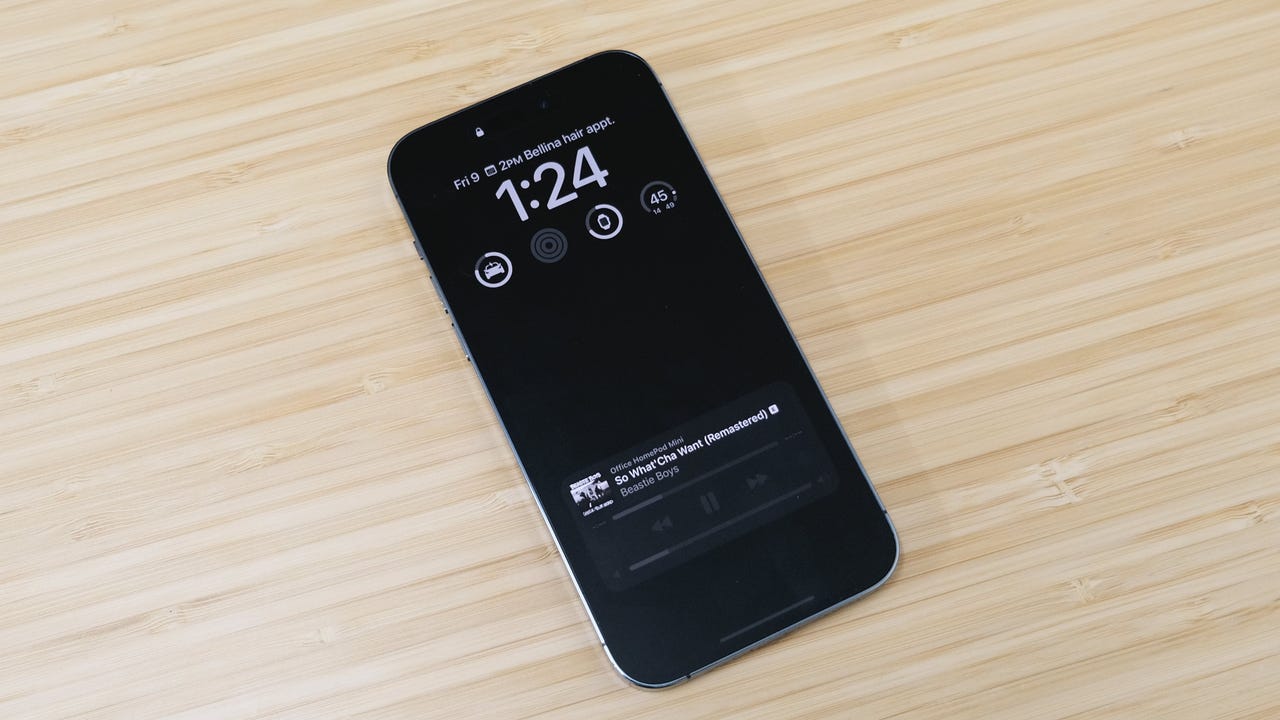































 Jason Cipriani/
Jason Cipriani/ You can find iPhone models directly from Apple starting from$449.
Read nowThe iPhone 14 Pro andiPhone 14 Pro Max have an always-on display that can feel like it's a little too always-on at times.
I know it took me a few weeks to get used to looking at the iPhone 14 Pro's screen and seeing that it wasn't black. I constantly checked to make sure that it wasn't awake.
Also: Why your iPad, MacBook, or even iPhone might stop charging this winter
Part of the problem is that your notifications and wallpaper are still visible, just not at the same brightness level as a phone that's awake.
With the release of iOS 16.2 (here's everything Apple updated Tuesday), Apple added two key settings to make the iPhone 14 Pro's always-on display look and work a lot more like Android's similar always-on feature -- and that's a good thing. Here's how to use it.
Before you'll see these new settings, you'll need to install iOS 16.2. You can do that by going to Settings > General > Software Update.
Also: Apple's new Freeform whiteboard app: 3 things to know to get started
Once you're updated, open the Settings app, then go to Display & Brightness > Always On Display. Previously, you could only turn AOD on or off. Now, you have new options: You can turn off the wallpaper only, prevent your notifications from showing up on your lock screen when the always-on display is being used, or both.
I personally turned off both options and have found it to be the right mix -- just enough information available at all times via the AOD, while not being too much. Adjust the settings to your liking and then lock your phone and appreciate the new always-on display experience, as it should have been at launch.
 Tags chauds:
Services et logiciels
Systèmes d’exploitation
Système d’exploitation Mobile
Tags chauds:
Services et logiciels
Systèmes d’exploitation
Système d’exploitation Mobile